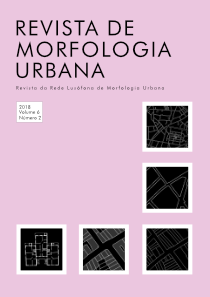Abstract
The objective of this research was to identify and analyze areas that can be classified as urban mutations in the Metropolitan Region of Campinas, state of São Paulo / Brazil, and to envince the most recurrent landscape patterns in their formation. The Metropolitan Region of Campinas consists of twenty cities and seven of them have areas that can be identified as urban mutations. Urban mutation is a concept created by Solà-Morales (2002) that helps to understand the formation dynamics of the contemporary city. The method is based on an approach that uses the mutation concept as a key to a spatial reading syntax, allowing to emphasize and delimit urban agglomerations that share the same set of morphological characteristics. The method includes analysis of aerial images and urban photographs provided by the Google Earth and Google Street View tools. The results point to the formation of a metropolitan axis that concentrates twenty one urban mutations and large areas of urban voids. The urban landscape that is in formation is generic and poor of typical elements of the traditional city, and it is being structured by a set of twenty-five landscape patterns which demonstrate the environment built at the pedestrian scale.
References
Cullen, G. (2006). The Concise Townscape. Oxford, Elsevier.
Prefeitura Municipal De Campinas (PMC). (2017). Plano Diretor Estratégico. Campinas, PMC. Disponível em: https://planodiretor.campinas.sp.gov.br/ [Acessado em: 06/12/2019]
Solà-Morales, I. (2002). Territorios. Barcelona, Gustavo Gili.

This work is licensed under a Creative Commons Attribution 4.0 International License.
Copyright (c) 2018 Daniel Teixeira Turczyn, Evandro Ziggiatti Monteiro


